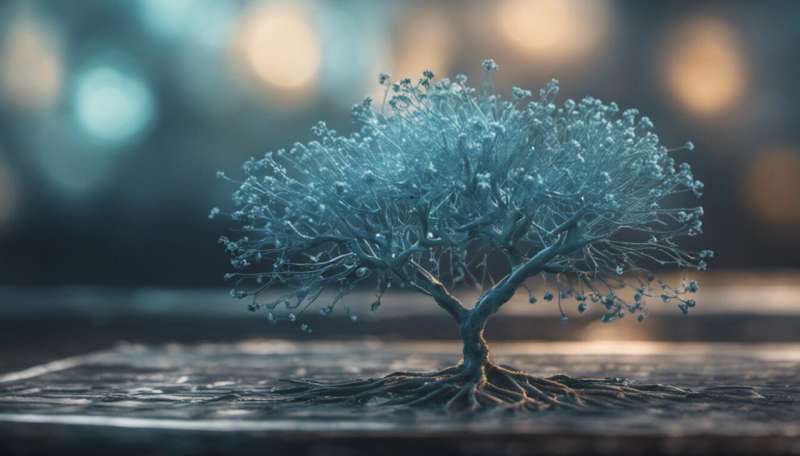This article has been reviewed according to Science X's editorial process and policies. Editors have highlighted the following attributes while ensuring the content's credibility:
fact-checked
trusted source
proofread
Predicting dementia using neural network characteristics

In many neurodegenerative conditions, brain changes occur before symptoms emerge. But now, researchers from Japan have found a new way to distinguish these conditions in the early stages according to changes in brain activity patterns.
In a study recently published in Dementia and Geriatric Cognitive Disorders, researchers from the University of Tsukuba have revealed changes in the cerebral neural network that could function as a biomarker for degenerative neurological conditions such as Alzheimer's disease and dementia with Lewy bodies—abnormal protein deposits in the brain.
Mild cognitive impairment can be an early symptom of Alzheimer's disease, cerebral small vessel disease, dementia with Lewy bodies or other neurocognitive disorders. As the clinical course of disease and treatment options vary among these conditions, there is a need to discriminate among them in the early stages, which the researchers at the University of Tsukuba aimed to address.
"Although several biomarkers for mild cognitive impairment have been identified, they generally require specialized neuroimaging equipment," says senior author of the study Professor Tetsuaki Arai. "Accordingly, we wanted to use conventional magnetic resonance imaging to compare network deficits in individuals with mild cognitive impairment due to Alzheimer's and dementia with Lewy bodies."
To do this, the researchers used a similarity-based approach, which looks for similarities between cortical structures as a measure of brain connectivity. They examined microstructural brain changes in individuals with mild cognitive impairment with Alzheimer's, those with mild cognitive impairment with Lewy bodies, and control participants.
"The results were surprising," explains lead author Professor Miho Ota. "In patients with mild cognitive impairment with Alzheimer's, we found significant network abnormalities in specific regions of the brain. In patients with mild cognitive impairment with Lewy bodies, we found similar changes but in other parts of the brain. No such abnormalities were found in the control participants."
Furthermore, these changes were present before disease-related changes in gray matter volume.
"Our findings indicate that it is possible to identify disease-related changes in neural networks in patients with mild cognitive impairment with Alzheimer's and those with mild cognitive impairment with Lewy bodies using a similarity-based approach, and to discriminate the two conditions according to the brain regions in which these changes are found. Accordingly, network images derived using this approach may be superior to gray matter volume images, which are conventionally used, for detecting subtle microstructural brain changes," says Professor Arai.
Given the relative availability of conventional magnetic resonance imaging devices at medical facilities, network imaging could be a more accessible method of assessing and comparing brain structures in individuals with mild cognitive impairment due to Alzheimer's and those with mild cognitive impairment with Lewy bodies.
More information: Miho Ota et al, Structural Cerebral Network Differences in Prodromal Alzheimer's Disease and Prodromal Dementia with Lewy Bodies, Dementia and Geriatric Cognitive Disorders (2022). DOI: 10.1159/000527443


















